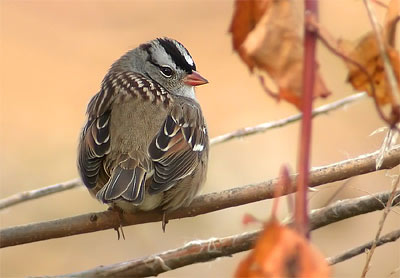
This is really interesting (mm)...
By experimentally relocating migratory White-crowned sparrows (Zonotrichia leucophrys gambelii) from their breeding area in the Canadian Northwest Territories to regions at and around the magnetic North Pole, researchers have gained new insight into how birds navigate in the high Arctic. In particular, the findings aid our understanding of how birds might determine longitudinal information--a challenging task, especially at the earth's poles. The work is reported in Current Biology by Susanne Åkesson and colleagues at Lund University in Sweden.
Migratory birds navigating over long distances can determine their latitude on the basis of geomagnetic and celestial information, but longitudinal position is much more difficult to determine. In the new work, researchers investigated whether birds can define their longitude after physical displacements in the high Arctic, where the geomagnetic field lines are steep and the midnight sun makes star navigation impossible for much of the summer.
White-crowned sparrows are nocturnally migrating birds that breed in northern Canada and perform long migrations covering a few thousand kilometers to winter in the southern United States. In the study, young and adult white-crowned sparrows were captured with mistnets near Inuvik, NW Territories, Canada, during mid-July to mid-August--the end of the breeding period and shortly before migration--and transported by a Canadian icebreaker along a northeasterly route to nine sites on the tundra, among them the magnetic North Pole (located on Ellef Ringnes Island). The researchers then recorded the birds' directional orientation in cage experiments.
The scientists found that both adult and juvenile birds abruptly shifted their orientation from the migratory direction to a direction leading back to the breeding area or the normal migratory route, suggesting that the birds began compensating for the west-to-east displacement by using geomagnetic cues alone or in combination with solar cues. The experiments suggest that, in contrast to what would be predicted by a simple genetic-migration program, both adult and juvenile white-crowned sparrows possess a navigation system based on a combination of celestial and geomagnetic information to correct for longitudinal displacements. The results of the study suggest that the birds may in fact use declination--the angle formed between the magnetic North Pole and geographic north--to obtain longitudinal information. Geographic north can be determined by star positions late in the summer, as night returns to the high Arctic.
Link: All about the White-crowned Sparrow from Cornell Labs
White-crowned Sparrow images © 2005 Michael Allen McDowell

















